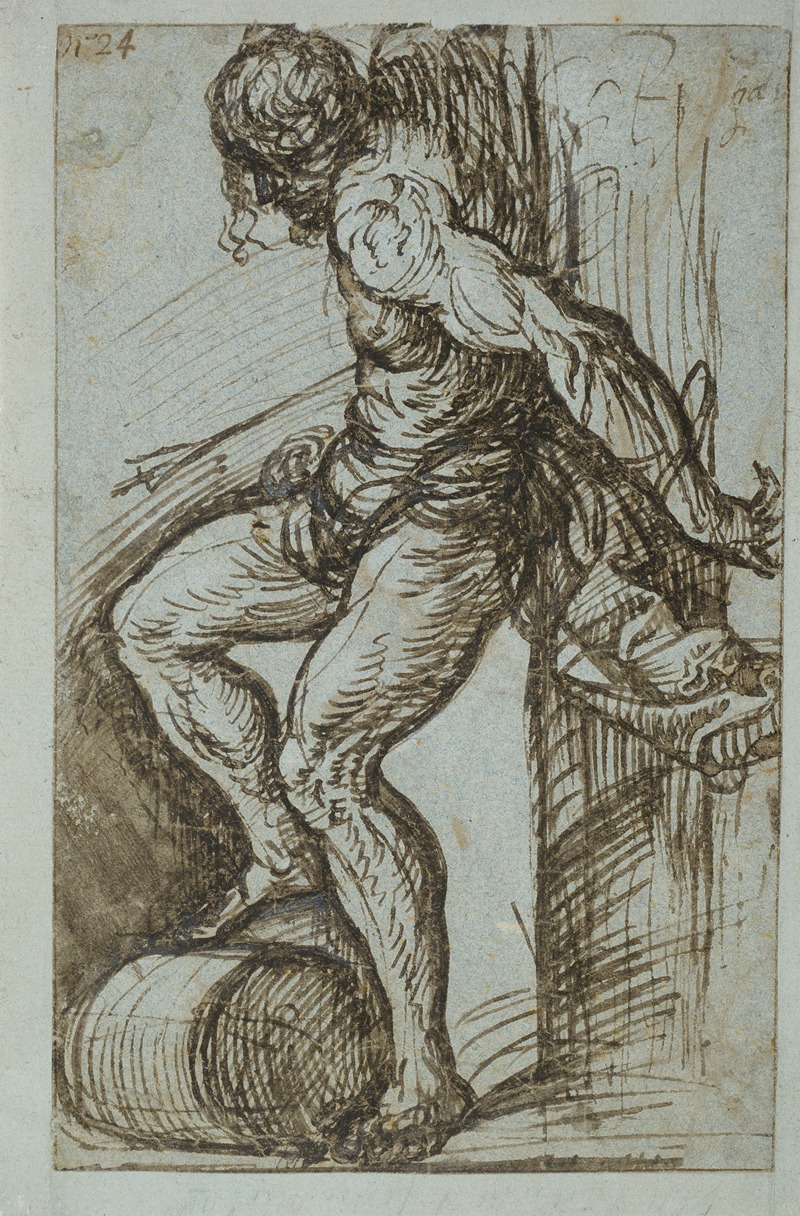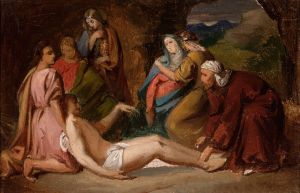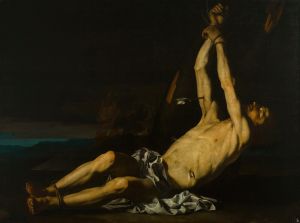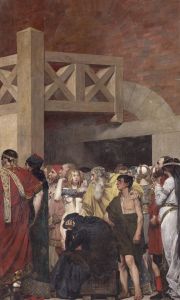
Study for St. Sebastian in the high altar of SS. Nazarro e Celso, Brescia
A hand-painted replica of Titian’s masterpiece Study for St. Sebastian in the high altar of SS. Nazarro e Celso, Brescia, meticulously crafted by professional artists to capture the true essence of the original. Each piece is created with museum-quality canvas and rare mineral pigments, carefully painted by experienced artists with delicate brushstrokes and rich, layered colors to perfectly recreate the texture of the original artwork. Unlike machine-printed reproductions, this hand-painted version brings the painting to life, infused with the artist’s emotions and skill in every stroke. Whether for personal collection or home decoration, it instantly elevates the artistic atmosphere of any space.
"Study for St. Sebastian in the high altar of SS. Nazarro e Celso, Brescia" is a work attributed to the renowned Italian painter Titian, who was a leading figure of the Venetian school during the Renaissance. Titian, known for his masterful use of color and innovative compositions, created numerous religious and mythological paintings throughout his career. This particular study is related to his work on the high altar of the church of Santi Nazaro e Celso in Brescia, Italy.
The church of Santi Nazaro e Celso is notable for housing several significant artworks, including Titian's altarpiece. The high altar features a depiction of St. Sebastian, a Christian martyr who is often portrayed in art as a symbol of strength and faith in the face of persecution. St. Sebastian was a popular subject during the Renaissance, frequently depicted tied to a post or tree and shot with arrows, which reflects the story of his martyrdom.
Titian's study for St. Sebastian likely served as a preparatory work for the final altarpiece. Artists of the Renaissance often created studies or sketches to experiment with composition, pose, and lighting before executing the final piece. These studies provide insight into the artist's creative process and are valuable for understanding the development of the final artwork.
The study itself would have been executed with careful attention to anatomy and expression, capturing the tension and drama associated with St. Sebastian's story. Titian's ability to convey emotion and movement through his figures is one of the hallmarks of his style, and this study would have been no exception.
Titian's work on the high altar of SS. Nazaro e Celso is part of his broader body of religious art, which includes other notable works such as the "Assumption of the Virgin" in the Basilica di Santa Maria Gloriosa dei Frari in Venice. His contributions to religious art were significant, as he brought a new level of emotional depth and realism to traditional biblical scenes.
While specific details about the study for St. Sebastian may be limited, the significance of Titian's work in Brescia is well-documented. His influence on the art world extended beyond his lifetime, impacting generations of artists who admired his innovative use of color and dynamic compositions.
In summary, "Study for St. Sebastian in the high altar of SS. Nazarro e Celso, Brescia" represents a piece of Titian's artistic process, reflecting his skill in capturing the human form and emotion. It is a testament to his enduring legacy as one of the great masters of the Renaissance.


















